Archive for June 29th, 2007
Uncertain Future for Tissa VitharanaA?a??a??s Proposals to the A.P.R.C
by D.B.S. JEYARAJ
Cabinet minister and All Party Representative Committee (APRC) chairman Prof. Tissa Vitharana participated at a forum held on June 18th at the Sri Lanka press institute. The gathering comprised journalists, media activists and publishers.
The forum was intended to encourage more discussion in all three linguistic media about Prof. VitharaneA?a??a??s working paper submitted to the APRC. Vitharana was hopeful of formulating a final draft in about six weeks time.The APRC itself has met 27 times during the past eight months.
On the following day President Mahinda Rajapakse met with members of the APRC conference in Parliament. According to media reports Rajapakse has stated that A?a??A? the APRC was primarily for the benefit of India and the Western nationsA?a??A?.

[President Mahinda Rajapaksa meeting British Prime Minister Tony Blair, Aug 2006]
It was a stratagem to demonstrate to the International Community (IC) that a political process was on.
Rajapakse disappointed many minority community members by his frank admission of what he envisaged the APRCA?a??a??s role to be.
The President also re-iterated his stance on what the final product will be. Sri Lanka was to be a unitary state. The unit of devolution was to be the district.
Rajapakse also mildly admonished Vitharana about some newspaper reports attributed to the Professor.
Rajapakse was unhappy that an impression had been conveyed through the media that the unitary state was out and that the devolution unit would be the province.
The president advised Vitharana to be careful about the media and inform him privately of dissenting viewpoints.
It had transpired during the discussions at the press institute forum that there was a difference between the Tissa Vitharana paper and the Sri Lanka Freedom Party (SLFP) position.
There was congruence between the chief opposition United National Party (UNP) stance and that of the Vitharana proposals.
But the SLFP stance was sharply divergent on the essentials from that of Vitharana. Now Rajapakse was confirming that the SLFP position on unitary and district as unit were non – negotiable.
During the discussions at the Press Institute forum Prof. Vitharana stated that there should be a consensus between the SLFP and the UNP to successfully implement whatever agreed upon at the APRC. It also required support of the majority of other political parties. Now it was being made clear by Rajapakse that such a consensus could only be on the basis of an inflexible SLFP stance.
Despite the worthwhile efforts of Prof. Vitharana to steer the APRC through troubled waters there is a school of thought which doubts his bona fides on the issue. This school opines that the APRC was a mere sham initiated by Rajapakse to con the world and buy time till his security forces established categorical supremacy over the Liberation Tigers of Tamil Eelam (LTTE).
The APRC was doomed from the start as agreement among diversely extreme points of view could not be reached. To go along with the APRC exercise therefore was either a conspiracy or sheer naivete on VitharanaA?a??a??s part this school of thought, felt.

[Prof. Tissa Vitharana] Cheap arcoxia
This writer agrees partly with the notion that Rajapakse had ulterior motives in convening the APRC. I am also doubtful about a positive result from the APRC. But I do not agree with the charge that Vitharana is a catspaw of Rajapakse. I feel that the veteran Samasamaajist has been fihting a lonely battle to evolve something concrete out of the APRC.
While Rajapakse may have had his own reasons for appointing Vitharana, the APRC chairman has been striving hard to achieve solid results. If Vitharana fails the consequences will be tragic indeed!
This writer is not naively optimistic about the APRC . It is not that one has suspended disbelief about reality . It is more a case of trying to support the best of the limited choices available.
If the APRC fails we would have lost another chance to reach an acceptable political solution. In the absence of such a solution the rationale for the on going war gets strenghened and A?a??A?legitimisedA?a??A? further. Therefore this column will continue as far as possible to support exercises like the APRC .
It is in this context that this writer has lent consistent support to the APRC and has endorsed the majority expert report and also the Vitharana working paper. The APRC and experts panel have not been ideal fora where like – minded people converged to formulate just and reasonable solutions.
They have in a sense been battle- grounds reflecting the divisions in the Sri Lankan polity. They have also been fora where political games reminiscent of Byzantine intrigues are being played.
In spite of this climate several persons have risen above race and religion to try and arrive at solutions beneficial to the Country at large rather than parochial interests.
VitharanaA?a??a??s working paper itself was necessitated due to the divisions among members of the experts panel appointed by President Rajapakse. The expert panel was expected to assist the APRC in devising a basis for discussion. But the expert panel itself got divided.
Eleven members comprising Six Sinhala, Four Tamil and One Muslim submitted a proposal described as the majority report. Four Sinhala experts presented another report called the minority report. Two other Sinhala members came up with a dissenting report each.
The expert panel majority report was the most progressive of all reports in form and content. Besides it had multi – ethnic support whereas the other reports were by members of the majority community alone.
But Rajapakse supported by the ethno – fascists and national socialists adopted a hostile attitude towards it.There was a concerted campaign against it although the IC as well as many political parties like the UNP supported it.
With four expert reports circulating and the President being opposed to the best of them all the APRC was in a state of turmoil. Further progress seemed impossible.
It was at this juncture that Vitharana surmounted the challenge by coiming out with his own working paper as a basis for discussions. The Vitharana proposals were essentially based on the majority export report.
It was not identical and dropped a few of the more controversial elements but retained the substance of the majority expert report.The APRC was on track again.
Once again, this was not to RajapakseA?a??a??s liking but the President went along with the motions of the APRC. But Medamulana Mahinda did two things that undermined prospects of APRC success.
Firstly he welcomed into Government folds eighteen MPA?a??A?s from the UNP. In one stroke Mahinda rendered the SLFP – UNP agreement worthless. Without a SLFP – UNP bi – partisan consensus the APRC was under a cloud because agreement between the two major parties was a pre- requisite for any solid achievement.
The second thing was MahindaA?a??a??s imposition of his opinion on the SLFP recommendations to the APRC. The SLFP committee headed by Prof. Wiswa Warnapala had persons like Sarath Amunugama and Dilan Perera as members. It was expected that the SLFP report would be commendable and an improvement on the 2000 draft bill.
The final report was a great disappointment to say the least. Unitary was emphasised and the unit was to be district/ village. The hand of Rajapakse in this dilution was transparent.
Against this backdrop it appeared that the APRC would not yield any worthwhile result as President Rajapakse had clearly foreclosed any chance of a viable, equitable and acceptable option emerging.
Still Tissa Vitharana persisted in trying to make the APRC work. Vitharana was working on the twin premises that the SLFP proposals were not the government proposals and that they were not final.
On this basis there was room to hope that meaningful efforts could make Mahinda Rajapakse revise his stance. One way was for constituent parties in the Government to exert pressure. The second was for members of the APRC and other political groups outside to mount pressure.
Other avenues were for civil society and media to help form public opinion. There was also the International Community. Discreet yet intensive pressure was expected from these sections.
The APRC and experts panel etc may very well have proceeded at a slow, leisured pace but for International pressure. Initially Rajapakse hoped to drag the APRC on for an unusual period of time. During this space he was optimistic of the armed forces routing the LTTE and acquiring much real estate in the North – East.
Once a military victory was achieved on ground then the APRC became irrelevant. It was for the Rajapakse regime to impose a forced peace and enforced political solution.Whether a total military victory is possible is one question. Whether a military victory sans a just political solution will resolve the problem is another question.
But the IC was not deceived. India in particular was pressurising Rajapakse intensely. This led him to declare specific deadlines. In recent times some Western nations also have shifted focus to the APRC. They feel that the APRC is the only visible silver lining today in a gloomy political sky.
The IC is not telling Colombo to call off the war against the LTTE. It is only saying dont violate democratic freedoms and human rights while fighting. More importantly the IC opines that a military solution alone is not feasible and that only a political settlement will be durable.
Therefore the IC wants an effective political solution to be achieved. The IC does not say that military efforts should be abandoned and that only a political search should be undertaken. What it requires is a credible, peace process to be on parallel to the military campaign.
Unlike the earlier stage where the IC felt a peace process could be effective only between the GOSL and LTTE , the stance this time is, that the process should be as much inclusive as possible and that a solution acceptable to a majority of opinion should be evolved.
Majority does not mean Sinhala alone but there is no denying that no solution within a united Sri Lanka will work unless a majority of the numerical majority support it.
It is in this context that the IC is supporting the APRC and evinces keen interest in its progress. The APRC has many flaws and a success is not guaranteed but it remains the best option available.
The ideal of course would have been for the GOSL and LTTE to sincerely explore the federal option in terms of the Oslo declaration. But both parties have been very insincere in that.
Under those circumstances the only alternative now is the APRC. In democracy one has to choose from what is available and not what is desirable.
However much the IC may back the APRC , its ultimate success depends on Sri Lankans themselves. Whatever the external input it is Sri LankaA?a??a??s problem alone and in the final analysis Sri Lankans have to resolve it. This is the IC position too.
So despite fits and starts, ups and downs, the APRC was seen as positive forward movement. The working paper submitted by Tissa Vitharana as basis for discussions was seen as credible. The expectation was that further discussions could enhance it further.
But now Mahinda has upset theA?a??A? dodang karatheA?a??A?. By stating openly to APRC members what the solution ought to be. He has also said the APRC is only to impress the IC that Colombo is keen on a political settlement.
Rajapakse has undermined the credibility of both the APRC and Prof. Vitharana. Some parties particularly those from minority commuities may feel the exercise is pointless hereafter. Future sittings of the APRC could become akin to a lame duck session of parliament.
But this column in the words of Dylan Thomas does not believe in A?a??A?going out gently into that good nightA?a??A? but in A?a??A?raging against the falling of thelightA?a??A?. The towel should not be thrown in prematurely.
The APRC should not be allowed to fade away. Instead efforts should be made to strengthen it further and seek ways of utilising it to greater advantage.
The plus point of the APRC at this stage is the Tissa Vitharana proposals. These have been criticised severely by both the Sinhala and Tamil hardliners. Rajapakse is clearly dissatisfied with them. This shows that these proposals have their merits.
It is this columnA?a??a??s view that no solution within a united Sri Lanka will succeed under a rigidly unitary structure. The substance of devolution should amount to federalism or quasi – federalism.
However if one is realistic then one has to accept that in a climate where federalism is a A?a??A?F- wordA?a??A? to many people on both sides of the ethnic divide, a straight course to the federal idea is difficult. Moreover Rajapakse through his myopic A?a??A?chinthanaA?a??A? has tied himself down to a unitary state.
Under these circumstances adopting a pragmatic approach is necessary. The Tissa Vitharana proposals are the best of what is available. The best ones in recent times were the GL – Neelan package and the majority expert report.
But these are not in the picture now unless the Tamil United Liberation FrontA?a??a??s Veerasingham Anandasangaree resurrects the GL – Neelan package and brings it on to public domain again instead of chirping incessantly about an Indian federal model.May of the suggestions made in the majority expert report have been adopted/adapted by Vitharana.
So the Vitharana proposals remain the best bet of what is available before the Country. More importantly it enjoys the distinction of being the A?a??A?officialA?a??A? position of the APRC to date. It has many commendable features but has shortfalls too.
But it can be improved upon if there is a will. Even Rajapakse can be persuaded into changing track if a united front is presented. For this some measures need to be taken.

[Ranil Wickremasinghe, UNP leader at a rally in Gampola on May 19th, 2007 – Pic:UNP.lk]
The onus is primarily on Ranil Wickremasinghe and the UNP. Wickremasinghe spends most of his time pointing out the negative aspects of RajapakseA?a??a??s policies and complaining to the IC about it. What is required of him is a more , determined effort. One place for Wickremasinghe to prove his fighting abilities can be the APRC itself.
The UNP should take the lead in pursuing an acceptable and equitable solution through the APRC. Instead of letting it fail the UNP should utilise it to greater advantage. Wickremasinghe himself can make a political statement – metaphorically and literally – if he himself attends the APRC once as a demonstration of his concern.
The various political parties representing the minority communities could join forces on a principled basis. Given the conduct of these parties hanging on to MahindaA?a??a??s A?a??A?SatakaA?a??A? I have my doubts whether they will ever rise to the occasion but nothing can be finalised without trying.
One sincerely hopes that the minority parties could present a strong position contrary to that of the SLFP and Rajapakse at the APRC.The Lanka Sama Samaaja Party (LSSP) and the Communist party (CP) could also play a part in formulating a non – SLFP viewpoint at the APRC.
There is also the fact that the SLFP is not unanimous in its position on the APRC. Though Rajapakse is trying to take the SLFP to a pre – 1956 position many stalwarts feel that the party should not go below its avowed position in 2000 when the draft bill was presented.
SWRD Bandaranaike used to say that A?a??A?rivers do not flow backwardsA?a??A? but Mahinda and his fellow travellers from the ethno- fascist camp want the SLFP to flow backwards in terms of the partyA?a??a??s commitment to devolution. So there is space for hidden persuasion within the SLFP too.
There is also room for more positive public opinion being formed through progressive sections of the media. Civil society can play its part too. The International community too could take the initiative in exerting pressure on Rajapakse.

[Peace hoarding, sponsored by a Sri Lanka media organization at the dawn of last year – Pic: HumanityAshore.org]
It seems obvious that the President is trying to use the APRC as a cosmetic exercise to hoodwink the IC and buy time. But this sword can cut both ways. If a determined effort supported by the IC is made then Rajapakse could be presented with a A?a??A?fait accompliA?a??A? at the APRC.
If the President chooses to disregard the A?a??A?consensusA?a??A? of opinion at the APRC he will stand exposed. Therefore he would do his best to avert such a possibility and subvert the APRC. The need of the hour is to resist such moves.
For that efforts should be made firstly to prevent the APRC from sinking into oblivion and secondly to utilise it fruitfully and evolve a reasonable set of proposals devolving maximum powers to a large unit of devolution. Tissa VitharanaA?a??a??s proposals can be the foundation for this.
Let us remember that the search for greater devolution amounting to federalism / quasi – federalism is not for or against the LTTE. It is for the silent majority of Tamil people who want to live with equal rights in a united but not necessarily a unitary Sri Lanka. At the same time it must be emphasised that devolution would help greatly in bridging the urban – rural divide and also help equalise uneven development among regions. For all this the quest to share power must not remain an unfinished task.
DBS Jeyaraj can be contacted on: djeyaraj@federalidea.com
34 comments June 29th, 2007
Will Mangala Samaraweera disown his Sinhala Ideology?
by Kusal Perera
How could one interpret or understand the effort taken by Mangala and his prop A?a??A?Mahajana WingA?a??A? (MW) after they placed their policies for public scrutiny? Others may have their own interpretations, but this is mine. For Mangala was very insistent that their list of A?a??A?dreamsA?a??A? is for discussion and debate by all and sundry. And quite honestly, my one line citation to it is, A?a??A?good dreams they are, but even crutches wouldnA?a??a??t make them walkA?a??A?.

[Mangala Samaraweera and Sripathi Sooriyarachchi amidst supporters]
Yes, crutches would only make them stand and stare at the dilemma around. The very selective approach in presenting the MW thinking depicts the seriousness of the dilemma the Sri Lankan politics is in, including Mangala. The dilemma is no linear slide down. Thus the contradictions and reluctance in facing the reality in its bitterest form. The very reason why the A?a??A?introductionA?a??A? to the policy statement captioned A?a??A?Dare to Dream! Towards A New Sri Lankan OrderA?a??A? is stretched into almost three, A4 size pages to stress on a A?a??A?glorious pastA?a??A? is to compromise with the very Sinhala extremists the document indirectly finds fault with. All those romantic quotes selected to justify the emphasized glory is out of context and heralds no such glory. The ancient past that never lacked feudal infighting quite contrary to what was quoted out of context in the MW policy document was that fathers, sons, brothers, wives and concubines, uncles and nephews conspired and killed each other to either save oneA?a??a??s throne or rob anotherA?a??a??s. And that was what the introduction was all about. There in fact is no serious break with traditional political thinking when compromising with Sinhala extremism, which is a pity.
That said in a very affirmative tone, what most would say A?a??E?yesA?a??a?? to is the straight forward criticism of the present government in the MW document. The conclusion Mangala has reached in it is that we are at the edge of the precipice of a failed state, if not already failed, will not be disputed. And also the description of A?a??E?form and contentA?a??a?? of this regime which is ridden with corruption, nepotism and inefficiency. Most importantly the issues raised on human rights violations and the ethnic war, are certainly right. They are all good criticism and criticism alone would not be enough to forgive Mangala, his supporters and his erstwhile ally the JVP for the burden they heaped on the people. Leading this country to live under this situation is no sin that can be easily forgiven and forgotten. Mangala making a public apology at the first media conference, nevertheless is a good and civilized way in getting started. But Mangala needs to go beyond criticism and break from all those negative strapping that he wanted for the sake of political power, to be forgiven. Despite that, Mangala has qualified on another creditable platform with his decision to break from political power he aspired to and challenge it openly. And itA?a??a??s for that hard decision taken, this policy document is considered for discussion for that too needs to be respected in this country.
On the positive side of the policy document is the diagnosis of our national ailments. One, it says A?a??A?the constitution that gives one individual unlimited executive powersA?a??A? is the first glitch. Two is the A?a??A?lack of an appropriate political solution to an unending ethnic conflict.A?a??A? and the third, is the A?a??A?complete lack of a focused, well planned national policy on developmentA?a??A?. And concedes rightly that all are symptoms of, as well as reasons for the same festering wound. The point of contention with Mangala nevertheless is whether such deep socio political rotting could be treated without opening up and suturing.
LetA?a??a??s ponder on issues discussed beneath the caption, A?a??A?Complete Overhaul of the CountryA?a??a??s Government and Political SystemA?a??A?. ItA?a??a??s not enough to say A?a??A?we dream of an independent Election CommissionA?a??A?. ThatA?a??a??s wishful thinking not at all decent for a political leadership to stop at. Mangala knows quite well the 17th Amendment to the Constitution that establishes independent Commissions was openly flouted by the powers that be. Therefore at least now if he is dreaming of an independent Election Commission, the policy position on the 17th Amendment has to be explained more firmly and with clarity. Will Mangala and MW push for amendments that would stop all Presidents from tampering with the appointment of all independent Commissions? Or else the independent Elections Commission would remain a sweet dream.
In that same vein, what is a miss in all what the MW proposes under 1.3 to 1.8 that covers parliamentary elections and its many facets is the future projection that they themselves see in a negotiated settlement for the ethnic war. The MW proposes sharing of power, subjected to majority consensus – an issue I would come to a little while later – but forgets that any sharing of power to what ever unit at the periphery, takes away quite a large slice of responsibility from the present parliament of 225 Members. The parliament at national level would then be only and mainly responsible for national policy, national defence, foreign policy and the like. Therefore, what logically arises first is not the issue of crossing over or the type of people nominated under the national list, but how many should be elected to the parliament that takes up only national issues after devolution. LetA?a??a??s not forget that India elects only 552 Lok Sabha Members for its population thatA?a??a??s almost 55 times bigger than ours. Without going into such depths in voter representation, what complete overhaul of government and political system will there be, as claimed?
The second most important issue identified by the MW in their policy document presented for social dialogue is the ethnic war. Their thinking is captured as A?a??A?2. Finding a Solution to the Ethnic ConflictA?a??A? with three sub sections under it. Diversity in our society the document notes, is not a problem that needs sitting down for discussions to find a solution, and to achieve peace through devolution of power within an indivisible countryA?a??A?. This sure is very good phrasing of an answer to a political issue that runs into logger heads with Sinhala chauvinist protests. But itA?a??a??s plain dodging when taken with other statements of policy. They are all plain abstract statements that avoid the mess that we face today.
What of today and how do we wake up tomorrow to the bloody conflict that the government keeps protracting? Will Mangala and his MW want to strengthen the Cease Fire Agreement (CFA) in order to provide space to salvage the lost peace talks? This is a crucial issue they donA?a??a??t even mention in their policy document. They donA?a??a??t accept there is still a CFA in its legal form and the SLMM mandated to watch over all violations. It is silently side stepped, for it was he and the JVP who campaigned to tear the CFA apart and burn it, till they formed their own government in 2004 April and installed their own President in 2005 November. They donA?a??a??t even look at Interim Steps, till some day the negotiations could start.
What is MangalaA?a??a??s and his MWA?a??a??s position on the proposals that are with the APRC? What will they support? The majority proposal? Without taking up clear positions on these current issues, it is ridiculous to say they A?a??A?believe that this divergence of opinions within our society need not be an obstacle to finding a lasting and durable peace that is acceptable to the majority of our citizens.A?a??A? Will the majority accept a negotiated peace, unless there is an open and constructive dialogue in society on current issues that leads to negotiations with a reactivated CFA that actually works on the ground?
Let this be precise and clear. Issues of human rights violations, abductions and breaking down of law and order that Mangala continues to criticize are all out crops of CFA violations that in real politics relates to the governmentA?a??a??s desire to press forward with an undeclared war. That is this governmentA?a??a??s policy in satisfying the Sinhala sentiments on which it came to power. Sinhala sentiments that Mangala and the JVP projected against a negotiated solution. Today, if Mangala and his MW want to dissociate with this war, dissociate with all violations of human rights, abductions and break down of law and order, then they have to dissociate themselves with the very Sinhala ideology they crowned in society; The Sinhala ideology that allows and justifies all social crimes under the banner slogan of eradicating terrorism.
That is the truth of present day politics and if Mangala wants other political parties, all democratic forces and progressive elements to engage in a dialogue with his MW, then he would have to say where exactly he stands on these issues quite openly. That may not open a dialogue with the JVP at this moment which is mortally afraid a broader alliance including the UNP would compel the President to dissolve parliament and go for an election. It is now clear that democracy, justice and fair play within a New Sri Lankan Order as dreamt by Mangala and his MW are opposites of what they stood for all these years. The choice is now open. One can not dream of riding two horses at the same time in opposite directions. Dreams that blur clarity of political positions on immediate and urgent issues wouldnA?a??a??t find feet to walk on credible grounds. So, it is over to Mangala and his MW to clear these positions for a more serious dialogue.
11 comments June 29th, 2007
Why is Sinhala Lion Flag Representing Muslim Majority Amparai District?
Even as efforts are underway to resolve the ethnic crisis through power sharing arrangements new developments threaten to upset the delicate ethnic prevalent in the North – East. A long standing grievance of the Tamil and Muslim people in the Eastern province is that of demography being altered through state aided colonisation schemes. Amparai in the East is the only district in Sri Lanka where the Muslims are the single largest ethnicity. Yet A?a??A?colonisation A?a??A?has reduced that majority status considerably. Disturbing evidence has come to light that fresh initiatives are on to dispossess Muslims of their lands in Pottuvil electoral division. Pottuvil itself is seen as the entry – point of Sinhalaisation in the East. The choice of a A?a??A?lionA?a??A? associated with the majority community as the symbol for Muslim majority Amparai district has heightened anxiety further. Land has become a crucial issue in evolving satisfactory and fair systems of devolution for Sri Lanka.

Children in Sainthamaruthu, Ampara District
[Photo: HumanityAshore.org]
The coalition of Muslims and Tamils for Peace and Coexistence (CMTPC) has released a special report focussing on this issue. It is titled A?a??A?Territorial Claims, Conquests and Dispossession in the A?a??A?New EastA?a??A?:The Growing concerns of the Muslims of Amparai.
The Federal IdeaA?a??A? reproduces that report in full:
Territorial Claims, Conquests and Dispossesion in the A?a??E?New EastA?a??a??: The growing concerns of the Muslims of Amparai
Coalition of Muslims and Tamils for Peace and Coexistence (CMTPC)
The new flag for the Eastern Province, introduced by the government, displays three animals: a lion symbolizing the Amparai district, an eagle for Trincomalee and a fish for Batticaloa. Batticaloa has long called itself the land of the A?a??A?singingA?a??A? fish, but why an eagle was chosen for Trincomalee is unclear.
The use of the Sinhala lion to represent the Muslim dominated Amparai district is terrifying: erasing the Muslim presence in the east, it is a potent symbol of the reality on the ground- the Muslims do not count in the larger context of our ethnic conflict.
The east is the testing ground for the success of any resolution to the conflict. All of our communities need to feel a sense of well being and belonging for peace and stability to prevail. But recent actions of the government and forces aligned to it are increasing the sense of insecurity felt by different communities.
The use of the lion for Amparai district suggests that this is a continuation of the post-independence Sinhalisation of the Eastern Province that has found new and brutal fervour under the administration of President Mahinda Rajapakse.
We speak here with alarm and with concern of specific acts by state agencies that continue the dispossession of the Muslim people through land acquisition and demarcation by the state. The Muslims of the Pottuvil region, who are already in a insecure position have in recent times felt the brunt of the heavy hand of state sponsored programmes.
These programmes have created anxiety and fear in the community. The Pottuvil region is multi cultural and multi ethnic, with an ethnic break down of 78.11% Muslims, 19.79% Tamils and 2.11% Sinhala. Traditionally, the different communities had co-existed peacefully with 90% of the population engaged in agriculture and the rest 10% in other forms of employment.
We give here four incidents or acts that have a direct bearing on the welfare of the people of the region:
1. The gazette notice dated 1454/26 of July 2006, declares that 1531 hectares of land of the Lahugala district secretariat of the Ampara District will be declared a National Park, which will be referred to, hereafter as the A?a??A?Lahugala-Kithulana National ParkA?a??A?. Since the borders of the Pottuvil and Lahugala Divisions are still under dispute (ref. Alfred Silva commission) Pottuvil Muslims feel that through this move the government is trying to take over land along the Lahugala Pottuvil main road that the Muslims have had access to and had been the means of livelihood for most of the people there.
2. On the 25 of the September, 2006, a letter signed by the Chair of the Lahugala Pradeshiya Sabha, to the Ministry of Public Administration, with copies to the President and the Minister of Labour Mr. Mervyn Silva, requested the annexation of the three gramasevaka divisions, Sarvodaya puram, Sinna Ulle, and Pasarichennai, (Periya Ulle) with the Lahugala Division, citing discriminatory practices of the officers against minority Sinhala and Tamil villagers. The ethnic break down for these three grama sevaka divisions shows an overwhelming Muslim majority: (91.5% Muslim, 4.7% Sinhala, 3.8% Tamil). So the motive for moving a Muslim majority area into a larger Sinhala unit in this instance is easily apparent.
3. In December 2005, official inquiries were made about identifying all the places of Buddhist worship and Dagabas in the Ampara district. A letter dated and signed by the G.A. of Ampara addressing the Pradeshiya Lekam makes this request. In Pottuvil alone they have indicated 07 places as sites of Buddhist heritage (Sangamankanthai, Kirimetiaaru, Pottuvil town, Muhuthumahaviharai, Eatham, Thaharampolla, Rottaiviharai).
4. It has also been brought to our notice that a thousand acres surrounding the Shasthiravelli STF camp in the Pottuvil region was previously under consideration as a High Security Zone, which had led to annexation of land that has traditionally been used by the people of the region. Now it has been declared as Shasthiravelli Temple land. There was a protest by the people of Pottuvil demanding access to this area in April 2007.
It is unclear whether all these four concurrent developments have progressed any further. For instance it is not clear if the request for the three gramasevaka divisions, Sarvodaya puram, Sinna Ulle, and Pasarichennai, (Periya Ulle) to be annexed to the Lahugala Division will go forward.
The Divisional Secretary of the Pottuvil District in a letter to the G.A. Ampara gave a detailed response, denying all charges of discrimination. He further noted that fishermen who came from other parts of the country indulged in unlawful occupation of state land and transgressed existing rules governing the buffer zone of the coastal areas and had been demanding permits for their illegal activities which were not acceded to by his office. As far as we know the matter has not progressed beyond this point but there are clear signs that there is growing pressure to push this issue further.
These acts of acquisition or potential annexation, taken in isolation, might seem purely bureaucratic or in the interests of military security. The policies can in fact be justified as being driven by important principles such as the conservation of nature, the right to equality for all ethnic communities and fair governance, the preservation of Sri LankaA?a??a??s ancient history and national security.
While these principles should be recognized and not dismissed, it is important to recognize the context in which these policies are being implemented and the agenda of those pushing these policies. If one approaches it from the perspective of history, the history of the minority communities, these acts emerge as part of a history where state-aided programmes have brought about demographic changes in the east. In this instance, these acts appear to be aimed at dispossessing the Muslim majority population of their land.
Pottuvil is politically an isolated division but it has featured prominently in the demographic and administrative battle for the East. Situated on the edge of Ampara district with a majority Muslim population, it has been used as the entry point for Sinhalisation of the east. Muslims politicians often neglect this division, leaving it to the consideration of one or the other of the two ruling parties (UNP or SLFP).
It is sandwiched between two Sinhala areas, Panama and Lahugala. Lahugala and Panama are two non-contiguous areas brought together as one DS division-Lahugala DS. When the Ampara district was created, a large Sinhala population was added on giving the district one of the oddest looking boundaries – a coastal belt linked to a truncated inland area, making crystal clear the ethnic agenda of the central government to avoid the emergence of a clearly Muslim-majority district. Like in other areas of the East and the North where new Sinhala names have proclaimed the expansion of the Sinhala colonization programme, Ampara too has undergone symbolic and demographic changes owing to state aided colonization programmes.
Amparai remains the play thing of ambitious politicians. The M.P for Amparai, who was formerly the Deputy Minister in charge of Mahaweli Development is back in power as Minister for Planning and Implementation and is in an influential position to steer the course of events in this unfolding story of annexation. He has, in fact, written a letter to the District Secretary of Pottuvil on 20th April, 2007, requesting/demanding that the thousand acres surrounding the Shasthiravelli STF camp be allocated to the Shasthiravelli temple.
The developments cited above follow other recent changes in land demarcation. In December 2005, the boundaries of the Pottuvil region were redrawn (which are still in dispute), where some of the land belonging to people from Pottuvil was brought under Panama Pattu, causing great difficulties to them, where language and transport were concerned.
Furthermore, and more importantly, grazing land that was traditionally used by the Pottuvil people was brought under Panama Pattu, leading to loss of access to this land and the subsequent decline in the 40, 000-cattle-strong livestock economy of the district. The redrawing of the boundaries of the Pottuvil region discriminates in many ways against the Muslim majority population The people of Pottuvil had already been dispossessed, by the enactment of the buffer zone in the region following the tsunami.
The redrawing of the boundaries exacerbates the situation of shortage of land for the people in the region. . They were not consulted in any of the actions; they had no say in what affected them most. The annexation of land by the state, land that has been traditionally used by the people of the region, as grazing land and for seasonal cultivation spells great loss to the economy and the welfare of the people. Steps need to be taken to protect forest cover and to ensure that the land is used in a sustainable manner; but this should be done by taking into account the needs and rights of the local people.
Arugam Bay in the Pottuvil region, is one of the biggest tourist attractions, not only of the east, but of the entire country and is a piece of prize real estate coveted by politicians and big business alike. In the wake of the tsunami and its destruction, the state instituted land-protection programmes including a buffer zone, which were perceived as serving the interests of big business from outside at the expense of those of the people of the area.
The acts of annexation are accompanied by other symbolic representations of appropriation, symbolic of conquest and hegemony. Buddhism in Sri Lanka, which in its fundamentals is a religion of peace and tolerance, is an integral part of state hegemony and is often experienced by minority communities as state aggression. Conquest of land is symbolized by what is perceived as Sinhala Budhisisation. In this respect, the erection of the statue of the Buddha among minority dominant areas has always spelt trouble, exacerbating ethnic tensions and in some instances, leading to outright confrontation.
Much of the time, the erection of a statue is not done by local Buddhists but by groups or agencies associated with the state. For instance, Ulle, a majority Muslim area in the Pottuvil region and a tourist hot spot, has been at the heart of the controversy of seemingly competing interests from the time of the tsunami. Two days after the tsunami in the midst of the disruption, dire loss, and anguish felt by the people all around, a statue of the Buddha on a podium was erected under cover of night, leading to acrimony and unnecessary conflict. In this climate, we cannot but be alarmed at the Buddhisisation, topographically, on the part of the state and see it as a sign of a Sinhala-Buddhist domination.
There are other disturbing accounts accompanying our narration. On March 21 2007, the JHU and the breakaway LTTE group TMVP, led by Karuna discussed issues collaboration regarding the protection of the cultural heritage of the eastern province. At the meeting, the JHU also raised issues of conservation in the East. This meeting was a part of a wider JHU strategy to take to another level the protection of Buddhist cultural and religious sites and to champion environmental issues.
The JHU politician Champaka Ranawaka is the Minister for Environment and Natural Resources. Thus the JHU is in a powerful position to push forward its campaign. Reports of the meeting contained references to A?a??A?evil elementsA?a??A? that were seeking to destroy cultural monuments. In the context of the JHUA?a??a??s anti-minority rhetoric this A?a??E?evilA?a??a?? can mean only one thing. Subsequently, we have had people of the region report to us that members of the Karuna faction had been threatening the people of the area with eviction orders from the A?a??A?sacred Buddhist landsA?a??A? they were A?a??A?occupying.A?a??A?
This has created considerable panic among the people, who have been exposed to a number of strategies to progressively dispossess them of their land. Also, TMVP, like its parent organization, the LTTE, has been attempting to establish its dominance over the Muslim community in the east, and is mimicking the LTTEA?a??a??s policies of violence against Muslims targeting and appropriating their lands.
Like the LTTE, whose ideology and practices it finds impossible to break away from, the Karuna faction too, is deeply mired in ethnicising the conflict in the east, increasing the sense of insecurity felt by the Muslims of the region. The collaboration between Sinhala Buddhist forces and TMVP itself might be short lived, but it emerges from the ultra-nationalists positions of extremism from both the Sinhala and Tamil communities, who insist that Muslims are interlopers and aliens on their homeland. Such actions if not condemned and eradicated from their very inception, can intensify fears of ethnic cleansing and exacerbate ethnic hostilities beyond repair.
The massacre of ten Muslim labourers in Radal Kullam (Radella) on September 17 2006, has made the Muslim community even more vulnerable in the face of increasing threats to their security and livelihood. Apart from the massacre itself, what followed in its trail has sparked wide spread controversy, in particular the manner in which the government and forces allied to the government covertly tried to cover up the incident.
While the local Muslim community claimed that the STF was responsible either directly or in complicity with local Sinhala Home Guards, the state and its allies sought to blame the LTTE. Those determined to blame the LTTE went to the extent of virtually taking hostage the sole survivor of the massacre, by diverting the ambulance from a hospital in Kalmunai to Ampara; by forcing the survivor to give an interview to MP A.L.M. Athaualla and by preventing the victimA?a??a??s family from meeting him in the first few days.
The state media on the other hand reported that the Muslims were blaming the STF because the STF had taken an active role in curbing illegal felling. Local Muslims, however have a different version. They placed the cause for the massacre on a series of conflicts over land, including one incident that happened just a day before the incident. This particular conflict arose over the attempt to use an area of the burial grounds, specifically demarcated for Muslims, to bury a Sinhalese person and STF intervention on behalf of the Sinhalese community. Local Muslims feel that the massacre was a warning to the Muslim Community; they should not vie for control of the land.
The issue of land grabbing and dispossession in the East is a complex and acrimonious issue, with political actors and ethnic communities exchanging charges that the opposing communities are using multiple methods to secure more territory. Forcible annexation and violence, land sales, poverty and a host of other factors have altered and continue to alter the ethnic geography of the east. An additional issue is the ethnicisation of bureaucracy and administration with administrative divisions marking ethnic boundaries.
The issue of land is tied to this ethnicisation of state bureaucracy, with Central Government, line ministries, GAs, land officers and GNs all forming a part of the struggle for securing and maintaining control of the land. This is the corollary of the ethnicisation of politics and the ethnic conflict itself. Thus, policies that show, for whatever reason, ethnic biases are viewed with suspicion. It is important to study and understand local situations and histories in addressing the fears and well being of different communities.
For instance, since its establishment the Amparai District has never had a GA from Sri LankaA?a??a??s minority communities. Local communities be they Muslim, Tamil or Sinhala often become the pawns of powerful blocs, testing the limits of age-old coexistence. Where the Muslim community of the east is concerned, the threats they face do not come from neighbouring Sinhala communities but from the state.
As we have noted above, the progressive dispossession of the Pottuvil people, through decree and by state sponsored forces, put the Muslim population in the region as a whole under great stress. There is an acute shortage of land in the region and the Muslim population feels the economic down slide accompanying these acts of appropriations.
The continuing trend of land grabbing is alarming. Land is the corner stone of any solution to the conflict in the east. It is a crucial factor in the resolution of the ethnic conflict in terms of power sharing. The state and other interested parties must act with the utmost caution in any policy implementation that might affect any particular community unjustly or serve to deepen ethnic disharmony.
The issues we have highlighted above deal with the Muslims in Pottuvil but this a larger problem common to other communities in the East. Even as we write, we have reports of the gazette notification of the declaration of large areas of land in Trincomalee, in the Sampur division, being taken over as High Security Zones. This needs to be looked into in careful detail as well.
The entire country is turning into a battleground, in the war between the State and the LTTE. The recent expulsions, of Tamils from Colombo, remind us of past acts of pogroms and ethnic cleansing: July 1983 and October 1990, the eviction of Muslims of the north by the LTTE, the slaughter of Sinhala peasants in the east by the LTTE.
In this context we also need to be concerned about other less spectacular and yet as significant and insidious moves by the state against ethnic minorities, increasing the fears and insecurities of the marginalized. The Muslims of the east feel beleaguered by the increasing violence and uncertainty surrounding them. They are over powered by state actions over which they have absolutely no control. This state of affairs needs to change immediately.
Peace and security for all the people in the east will be the ultimate test of any programme of power sharing. It is the primary responsibility of the state and other political and civil organizations to address the fears of the minority communities in the east, as an urgent issue, whether they be Muslim, Tamil or Sinhala, and work toward putting an end to the terror that is stalking the region. We request civil activists and concerned persons to explore this matter further in order to arrive at a just and equitable alternative to state aggression against minority communities.
_________________________________________________
Coalition of Muslims and Tamils for Peace and Coexistence
The coalition of Muslims and Tamils is a Sri Lanka based organization-comprising Muslim and Tamil identified persons who as a general principle are committed to pluralism and social justice in all its forms. Specifically, we are committed to the peaceful coexistence of Muslims and Tamils in the country, particularly in the north and east, and to a just and equitable solution to the ethnic conflict.
We can be contacted at: peaceandcoexistence@yahoo.com
Please visit our website : www.ctmpc.blogspot.com
20 comments June 29th, 2007
Bi- Partisan Political Platform Needed For Peace Process Success
by Namini Wijedasa
Reacting adversely to international criticism and creating xenophobia will only distance Sri Lanka from the world, a senior diplomat warned last week, adding that the country must immediately start a dialogue locally and with the international community on the concerns that have been raised.
A?a??A?It is true that perhaps there are misunderstandings abroad about what is happening here,A?a??A? said H M G S Palihakkara, who retired as Foreign Secretary six months ago. A?a??A?It may also be true that the credit is not given to the government about the enormous efforts it has deployed, both to take counter measures against terrorism as well as to advance a political process.
A?a??A?But to react adversely to criticismA?a??A? to say that we have no problems amongst ourselves and that the foreigner is the sole source of our problemA?a??A? is not the way to proceed. We have to engage them in a constructive dialogue and not distance them with a combative monologue, thereby creating xenophobic sentiments quite unfamiliar to Sri Lanka.A?a??A?
It was PalihakkaraA?a??a??s first press interview since leaving the Sri Lanka Foreign Service after 27 years. Earlier – speaking at the launch of a book on the peace process – he pointed out that Sri LankaA?a??a??s peace process had been highly externalized only because the country had failed to solve its own problems.
A?a??A?There is this feeling that the foreignersA?a??A? always try to overlook what the LTTEA?a??a??s doing and are blaming the government,A?a??A? the seasoned diplomat told LAKBIMAnEWS. A?a??A?I believe this is not a helpful attitude. Diplomacy is all about engaging people who donA?a??a??t perhaps understand your problem. That is how the European Union ban on the LTTE was achieved.A?a??A?
When asked about the governmentA?a??a??s current policy on the LTTE, he said everyone agrees terrorism has to be dealt with. But, A?a??A?while we take the military component of our overall strategy forward, there should be a parallel political process.A?a??A? A?a??A?What is happening now is that the political process got so lagged behind,A?a??A? he noted. A?a??A?ThereA?a??a??s no question that you need a military component. But without a parallel political process, you canA?a??a??t reap the benefits you accrue from the military process.A?a??A?
The alleged human rights violations are a huge problem, Palihakkara said. Referring to abductions, he agreed that there may be some A?a??A?mischief makersA?a??A? who engaged in this activity for financial or political gain. A?a??A?At the same time, there are very serious charges of abduction and disappearance which, as the prime minister himself mentioned regarding a similar issue, the elected government should take responsibility for and investigate.A?a??A?
A?a??A?The problem is that we cannot say disappearances are taking place but it is not possible to find out who is doing it,A?a??A? he stressed. A?a??A?That is not a healthy situation for any elected government or for the country.A?a??A?
He also said that if actions taken to investigate these offences donA?a??a??t provide quick results, there could be both governance and economic repercussions as the atmosphere conducive to tourism, investment and other economic activity gets affected. Sri Lanka could face international strictures that will reflect badly on the country.
Palihakkara felt criticism of the government on human rights should not be seen as A?a??A?helping the LTTEA?a??A?. A?a??A?I donA?a??a??t think criticizing anyone for human rights violations can be construed as helping anyone else because respecting human rights is a constitutional obligation,A?a??A? he observed. A?a??A?If you ignore human rights, you do so at your own peril as an elected government.A?a??A?
Was the international community bullying Sri Lanka? A?a??A?IA?a??a??m not sure about the terminology used,A?a??A? he replied, A?a??A?but certainly, we are being pressured. There are all kinds of international pressure that can be brought to bear. We have to remove the causes of these pressures, not react adversely to them. We have had pressures before and we managed to address and ease them.A?a??A?
Palihakkara accepted that the international community may be practising double standards. A?a??A?Double standards are a reality in realpolitik,A?a??A? he noted. A?a??A?In diplomacy and inter-state relations, there are no cast iron principles. They are dictated by different interests. Interests and principles donA?a??a??t always coincide. A?a??A?We have to be realistic about it. We donA?a??a??t have the luxury of preaching morality in international relations.A?a??A?
He also said that for the peace process to succeed, Sri Lankan needed a bipartisan political platform. A?a??A?Until that happens, Prabhakaran will be very happy to talk now, fight later, talk again and fight again, and so on,A?a??A? he asserted.
A?a??A?Frankly speaking, I donA?a??a??t think itA?a??a??s a good idea that each party tries to accommodate Mr Prabhakaran,A?a??A? Palihakkara continued. A?a??A?That is what they are doing. Each party, whether the SLFP or the UNP, is trying to accommodate Prabhakran.. And for the sake of election gain, they donA?a??a??t try to accommodate each other.A?a??A?
A?a??A?We have within our competence both the prescription and the will to come up with the political solution backed by substantial and brave military gains,A?a??A? he added, calling on the major parties to fight elections on issues outside the conflict.
[Courtesy: Lakbima News]











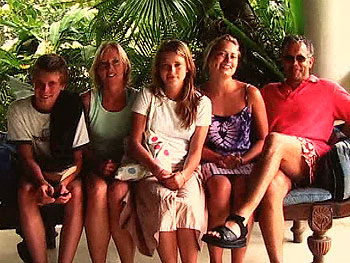








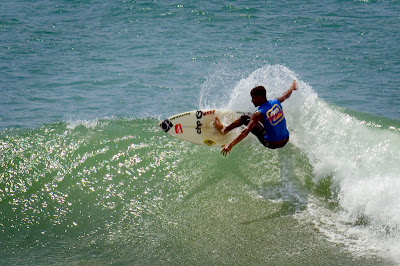







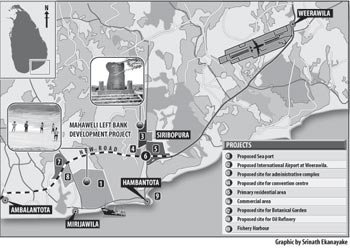
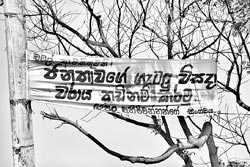
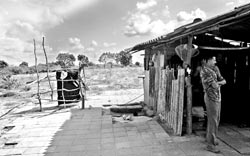
 Arugam Forum
Arugam Forum Arugam Photo Galleries on Picasa
Arugam Photo Galleries on Picasa Old Website
Old Website Press Coverage
Press Coverage Surf Forecast for Arugam Bay
Surf Forecast for Arugam Bay
TODAY’s Comments